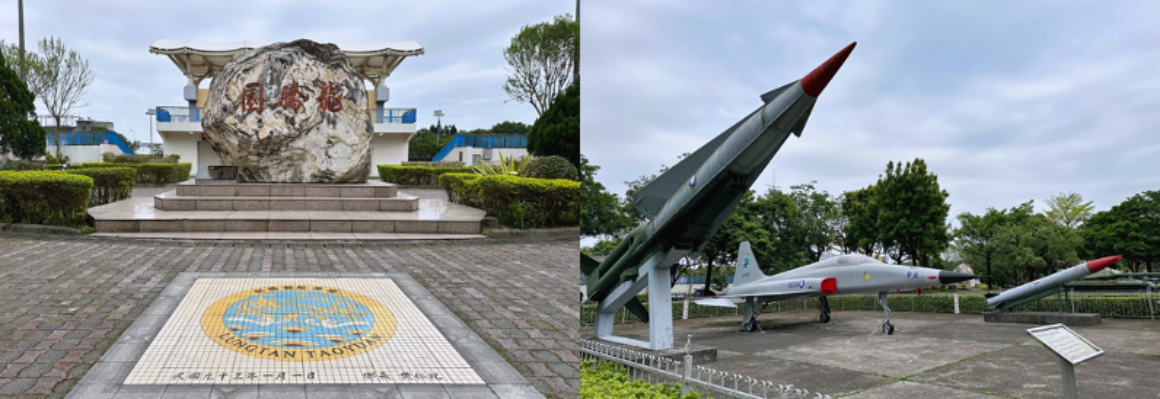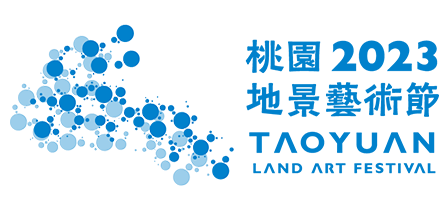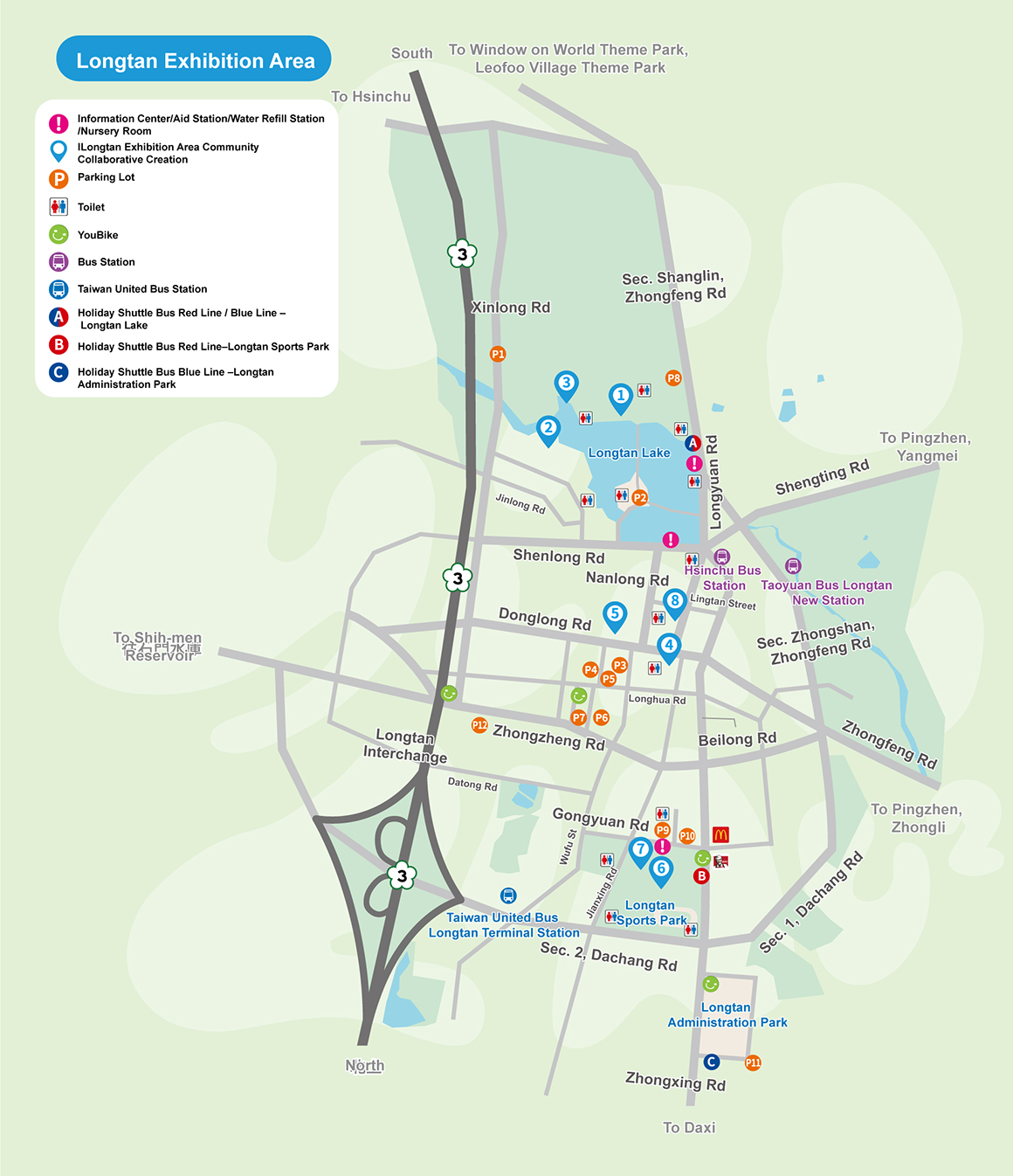
Longtan Large Tourist Pond
Longtan Large Tourist Pond is one of Taoyuan's well-known tourist attractions. Like many other ponds, its original function was to regulate water levels and irrigate farmland. Nowadays, it has become a popular recreational spot for local residents, and during the Dragon Boat Festival, it attracts many visitors from other places to watch the dragon boat races, creating a vibrant atmosphere. In recent years, with the efforts of the city government, the century-old Longtan Big Pond has been transformed, with its majestic suspension bridge getting a makeover and the addition of water activities and other leisure elements, preserving its century-old charm. Riding on a swan boat, one can enjoy the picturesque view of the surrounding mountains and the sparkling water of the pond. As the evening falls, immerse yourself in the romantic light show and admire the ever-changing night scenery. It is not only a sweet spot for romantic strolls and date nights but also the perfect place for water sports enthusiasts to enjoy activities such as Stand-Up Paddleboarding (SUP). Who says you can only watch dragon boat races during the Dragon Boat Festival? Here, you can also reserve in advance to participate in a dragon boat race with your friends. In addition to fun water activities, there are three different styles of viewing bridges that span the pond, allowing you to appreciate the ever-changing scenery of this enchanting pond from different angles. The newly reconstructed Longtan Big Pond Suspension Bridge, with its imagery of dragons and water, features a combination of cable-stayed and suspension bridge design, creating an imposing and magnificent sight. Standing at the center of the bridge, you can have an unobstructed view of the entire Longtan Big Pond. At night, the bridge takes on a different charm, with colorful lights creating a romantic and dazzling atmosphere. The second bridge is Jiuqu Bridge (Zhongyi Bridge), which connects directly from Longyuan Road on the north side of the Big Pond to Nantian Temple. The bridge has nine curved sections, and as you walk along the bridge, you can enjoy different views of the pond at each bend. At the north end of the bridge, next to the mountain gate archway, there is a statue of Maitreya Buddha with a smiling face welcoming visitors from all directions to pay their respects to Nantian Temple (dedicated to the deity Guan Sheng Di Jun). The third bridge, Man Yue Bridge, is located at the south end of the Big Pond. It is a short bridge, only 40 meters long, and is an arched stone bridge. Despite its short length, it is situated at the southern end of the Big Pond, allowing visitors to stand on the bridge and have a panoramic view of the entire pond, giving it an impressive "one bridge encompasses the entire pond" appearance. If you feel tired and want to have a leisurely cup of coffee, taste delicious food, or enjoy a little drink, you can head to the Waterfront Plaza on the second floor next to the Big Pond to "Dragon Coffee" or "Himitsu Bar & Bistro". Accompanied by the beautiful scenery, you can change your mood and relax, savoring the beauty of life. Both restaurants are also perfect romantic date spots, where you can create sweet memories that will last a lifetime.
Longtan Old Street Are
Zhong Lihe Memorial Institute
- Introduction to the Venue
On April 20, 2019, the Zhong Lihe Memorial Institute opened under the witness of Mr. Zhong. With the development of surrounding business districts and slow tourism landscape, the demand for guided tours has been increasing. Therefore, in 2021, the Taoyuan City Government's Hakka Affairs Bureau and the Taoyuan Hakka Cultural Foundation jointly organized the "Explore Longtan with Literature - Longtan Literary Landscape Walking Tour and Guide Training," aiming to attract enthusiasts to engage in literary landscape tours and narrate the stories of literary landscapes in various ways, enhancing emotional connections with the land.
The park adopts the concept of "The whole Longtan is our literary life park," aiming to closely connect with the local community. Its purpose is not only to promote Longtan through literary marketing and enhance its tourism value but also, more importantly, to enable the public to rediscover the joy of reading and find the essence of the land within the lines of Taiwanese literature.
Since 2012, the historical buildings of Longtan Elementary School's Japanese-style dormitory and Longtan Wude Temple have undergone historical research and planning by the Taoyuan County Government's Cultural Bureau, as well as the establishment of a work station project. In 2015, it was officially named the "Zhong Zhao Zheng Literary Life Park." The park's core development is based on the literary works of the nationally acclaimed Hakka writer, Mr. Zhong Zhao Zheng (referred to as Mr. Zhong), with literary landscapes as the branches. The park follows the thinking of a contemporary ecological museum to extend and reshape the close connection between Longtan and post-war Taiwanese literature.
Longtan Martial Arts Hall
- Venue Introduction
Longtan Martial Arts Hall is a Japanese-style shrine architecture, adopting the "imitation column and beam style framed wall facade." It features a combination of traditional Japanese and Western elements, presenting a harmonious layout with a Japanese-style "irimoya" roof. Due to its function in martial arts activities and the characteristics of a shrine, the raised platform is a unique design of the Wude Temple. The foundation is equipped with springs and amplifiers to enhance sound resonance during martial arts performances, highlighting the martial spirit of practitioners. In the future, the Wude Temple will be integrated with the nearby Longtan Elementary School's Japanese-style dormitory complex to become the "Zhong Zhao Zheng Literary Life Park," providing the public with diverse cultural and leisure spaces.
- Historical Background
In the 28th year of Meiji (1895), the Great Japanese Wude Association was established in Kyoto. At that time, the Wude Temple was built to promote martial arts, martial virtues, and martial ethics, integrating training for disciplines such as swordsmanship, Jujutsu, and archery in a single building, with a shrine dedicated to martial deities. During Japan's governance of Taiwan, the Wude Association entered Taiwan's police system, establishing Wude Temples in various administrative regions to train Japanese military and police in martial arts and further promote martial arts. At that time, many secondary schools included martial arts in their curriculum. The Wude Temple bears witness to the history of the Japanese colonial era. Over 70 Wude Temples were built in Taiwan during that period, but most have not survived since the restoration of Taiwan's sovereignty. Only two Wude Temples remain in the Taoyuan area, located in Daxi and Longtan.
Longyuan Temple
- Temple Introduction
Longyuan Temple has been a center of local worship since the Qing Dynasty, mainly dedicated to the agricultural deity - Shennong Dadi (also known as the God of Five Grains). Every April, the "Shennong Dadi Cultural Festival" celebrates the birthday of Shennong Dadi with activities like the pig deity competition and traditional music performances, attracting numerous visitors. The annual Lantern Festival also features events such as the "Antique Parade" and the procession of the God of Wealth, making it a lively and vibrant occasion comparable to the Lunar New Year festivities.
- Historical Background
Founded in the fifth year of the Daoguang era (1825), Longyuan Temple has a history of 199 years and is about to celebrate its 200th-anniversary celebration. The current appearance of the temple was completed in 1994. It stands as one of the ancient temples with a long history in the Longtan District. The temple's majestic and solemn appearance, along with its flourishing incense, is dedicated to preserving and guarding traditional beliefs. It actively participates in community welfare activities, caring for vulnerable groups, and making significant contributions to the local social development.
Longtan Elementary School
Longtan Elementary School was established and approved on January 14th in the 13th year of the Republic of China. It officially opened on March 15th in the 13th year of the Republic of China. Initially, it was named "Longyuan Public School." Later, in the 39th year of the Republic of China, it was renamed "Taoyuan County Longtan Township National School." In the 57th year of the Republic of China, due to the implementation of the nine-year compulsory education system, it was further renamed "Longtan Elementary School." With a history of over 120 years, spanning three centuries, the school has played a significant role in local heritage. Throughout the changes of three centuries, Longtan Elementary School has maintained a prominent position in local education and cultural inheritance. Embracing the evolving educational trends and rapid policy changes, the school has consistently taken a leading role in education and cultural preservation in the Longtan District.
LINGTAN STREET CREATIVE HUB
LINGTAN STREET CREATIVE HUB,The painted lanterns depicting scenes of Longtan are hanging high, filling the air with the aroma of freshly baked cakes, and lively music can be heard from time to time. It's hard to imagine that this used to be the abandoned Longtan Old First Market Food Street for 14 years! In 2016, several local young people in the seventh and eighth grades came together with the goal of promoting local culture in Longtan, giving birth to the establishment of the Innovation Base. In 2017, the Innovation Base settled in the once bustling area of Longtan's First Market and was named "Lingtan" after the old name of the area, bringing together 20 local creative brands and injecting unprecedented creative energy into Longtan.
Longtan Sport Park
Longtan Sports Park is a public park located near the bustling city center of Longtan District, Taoyuan City. It is situated between Gongyuan Road, Jianxing Road, Dachang Road, and Beilong Road. Upon entering from Gongyuan Road, visitors can see the imposing Longteng Monument, inscribed with "Longteng Garden" on the front and the word "Perseverance" on the back. The park aims to promote a sports culture and foster a spirit of health and vitality among people, symbolized by the inscription on the monument. It advocates the integration of sports and arts, providing nourishment for a healthy body and mind. Adjacent to the monument, there is a pavilion for visitors to rest on the nearby lawn.
The spacious grass field of the park serves as a perfect playground for both adults and children, as well as pets to run and play. With its large-scale water play facilities and changing rooms, it is also known as the Longtan Water Park. Other amenities include jogging and track fields, picnic areas, basketball courts, and an exhibition area showcasing retired military equipment, giving rise to the nickname "Longtan Military Park."
Longtan Sports Park was planned during the urban development of Longtan Township in 1974 and completed in 1997. It has undergone several renovations to become a multifunctional sports park, with the current design completed in 2002. Covering an area of approximately five hectares, the park features various facilities such as an athletic field, sports hall, tennis courts, water recreation area, basketball courts, administration area, wedding promenade, family recreation area, military exhibit area, and pavilions. It is conveniently located near the Longtan city area and the North Second Freeway interchange. Due to its historical significance as a military area, the park also houses a Military History Park that exhibits decommissioned military equipment, including TH-55C trainer helicopters, M41 Walker Bulldog tanks, Sky Bow I surface-to-air missiles, F-5E Tiger II fighter jets, Chaparral air defense missiles, and M42 twin-barrel anti-aircraft tanks.

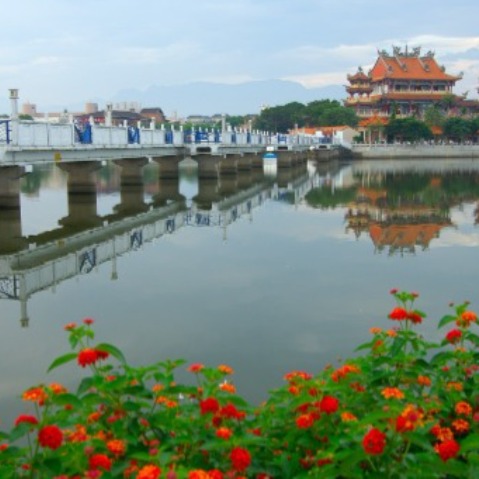
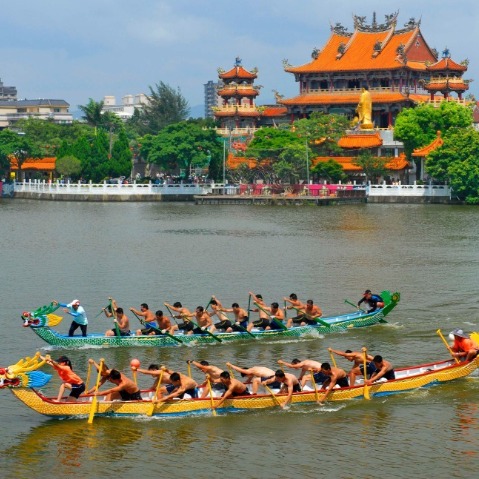
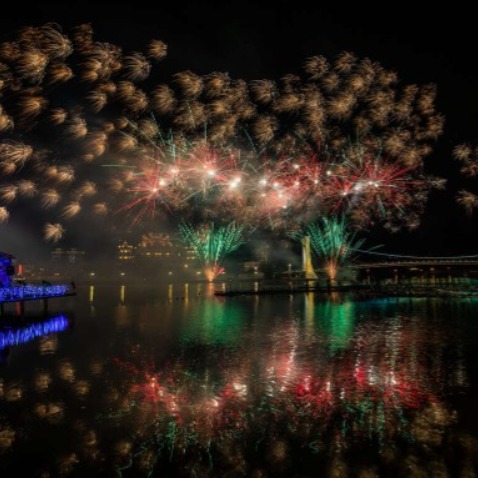 Longtan Old Street AreZhong Lihe Memorial Institute
Longtan Old Street AreZhong Lihe Memorial Institute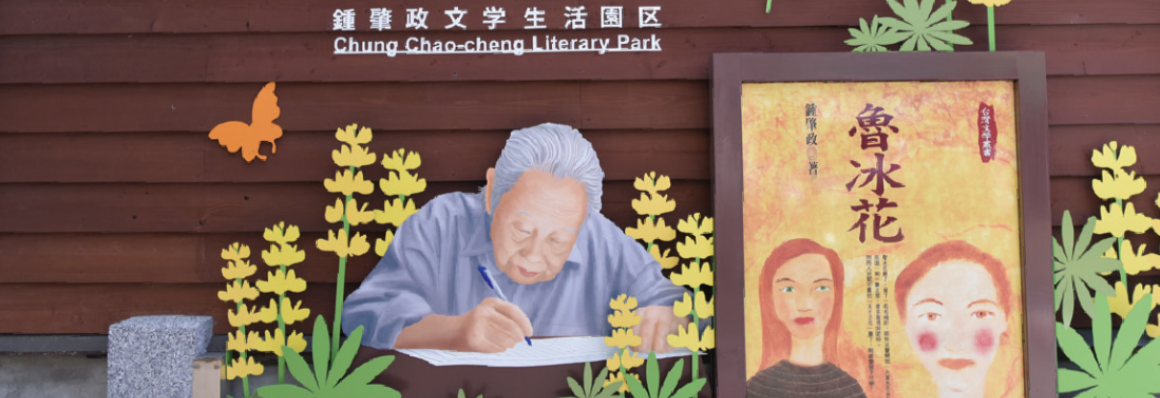
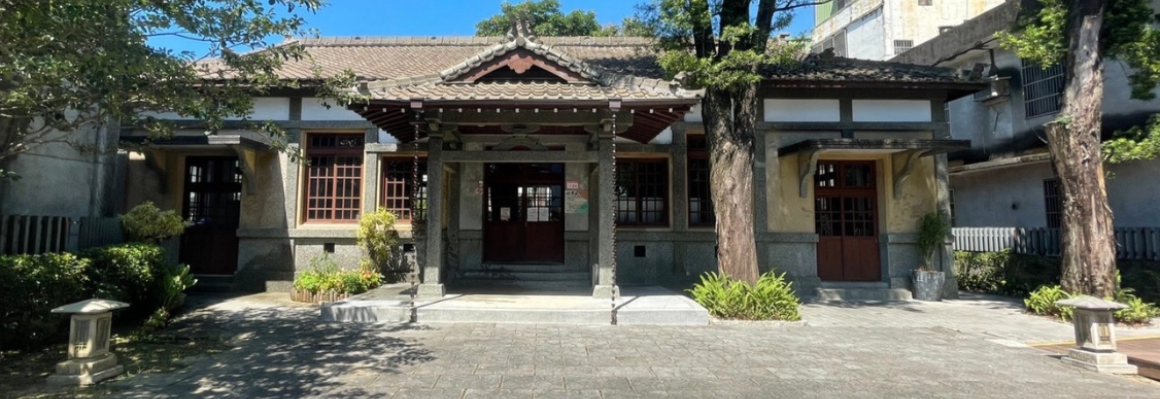 Longyuan Temple
Longyuan Temple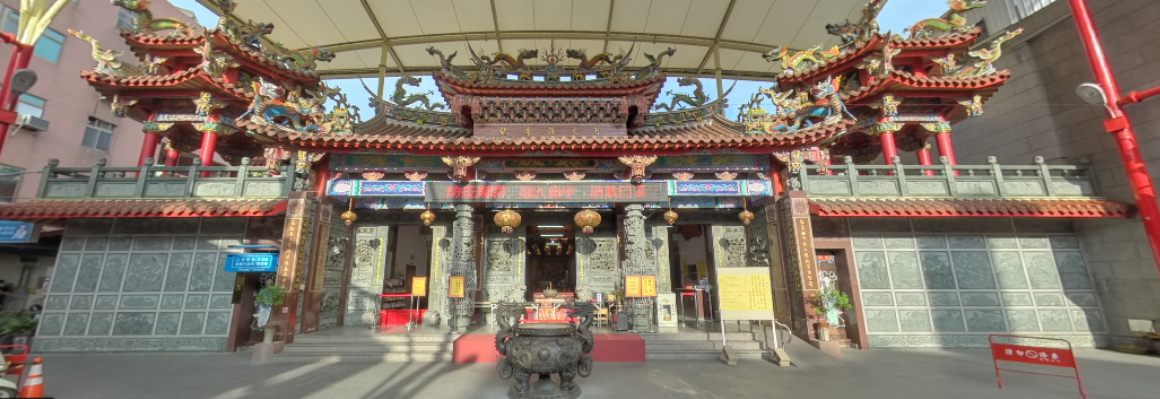 Longtan Elementary SchoolLongtan Elementary School was established and approved on January 14th in the 13th year of the Republic of China. It officially opened on March 15th in the 13th year of the Republic of China. Initially, it was named "Longyuan Public School." Later, in the 39th year of the Republic of China, it was renamed "Taoyuan County Longtan Township National School." In the 57th year of the Republic of China, due to the implementation of the nine-year compulsory education system, it was further renamed "Longtan Elementary School." With a history of over 120 years, spanning three centuries, the school has played a significant role in local heritage. Throughout the changes of three centuries, Longtan Elementary School has maintained a prominent position in local education and cultural inheritance. Embracing the evolving educational trends and rapid policy changes, the school has consistently taken a leading role in education and cultural preservation in the Longtan District.
Longtan Elementary SchoolLongtan Elementary School was established and approved on January 14th in the 13th year of the Republic of China. It officially opened on March 15th in the 13th year of the Republic of China. Initially, it was named "Longyuan Public School." Later, in the 39th year of the Republic of China, it was renamed "Taoyuan County Longtan Township National School." In the 57th year of the Republic of China, due to the implementation of the nine-year compulsory education system, it was further renamed "Longtan Elementary School." With a history of over 120 years, spanning three centuries, the school has played a significant role in local heritage. Throughout the changes of three centuries, Longtan Elementary School has maintained a prominent position in local education and cultural inheritance. Embracing the evolving educational trends and rapid policy changes, the school has consistently taken a leading role in education and cultural preservation in the Longtan District.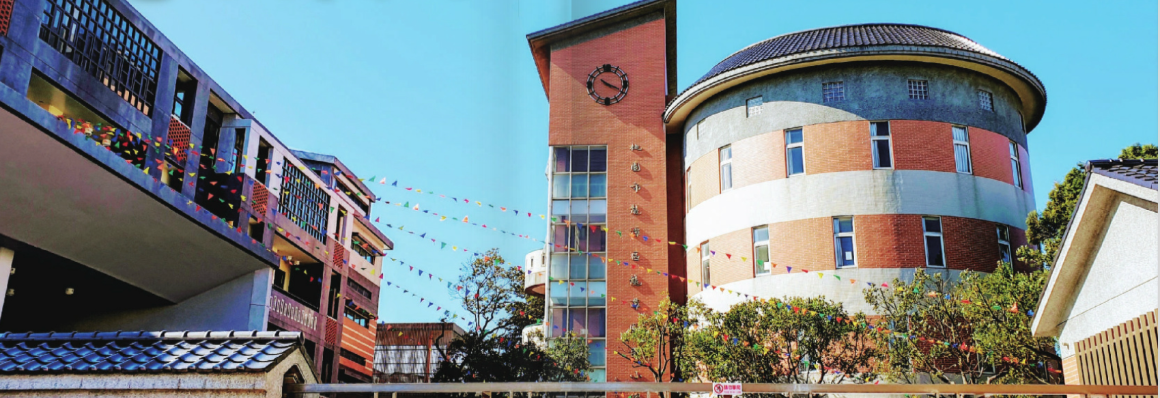 LINGTAN STREET CREATIVE HUBLINGTAN STREET CREATIVE HUB,The painted lanterns depicting scenes of Longtan are hanging high, filling the air with the aroma of freshly baked cakes, and lively music can be heard from time to time. It's hard to imagine that this used to be the abandoned Longtan Old First Market Food Street for 14 years! In 2016, several local young people in the seventh and eighth grades came together with the goal of promoting local culture in Longtan, giving birth to the establishment of the Innovation Base. In 2017, the Innovation Base settled in the once bustling area of Longtan's First Market and was named "Lingtan" after the old name of the area, bringing together 20 local creative brands and injecting unprecedented creative energy into Longtan.
LINGTAN STREET CREATIVE HUBLINGTAN STREET CREATIVE HUB,The painted lanterns depicting scenes of Longtan are hanging high, filling the air with the aroma of freshly baked cakes, and lively music can be heard from time to time. It's hard to imagine that this used to be the abandoned Longtan Old First Market Food Street for 14 years! In 2016, several local young people in the seventh and eighth grades came together with the goal of promoting local culture in Longtan, giving birth to the establishment of the Innovation Base. In 2017, the Innovation Base settled in the once bustling area of Longtan's First Market and was named "Lingtan" after the old name of the area, bringing together 20 local creative brands and injecting unprecedented creative energy into Longtan.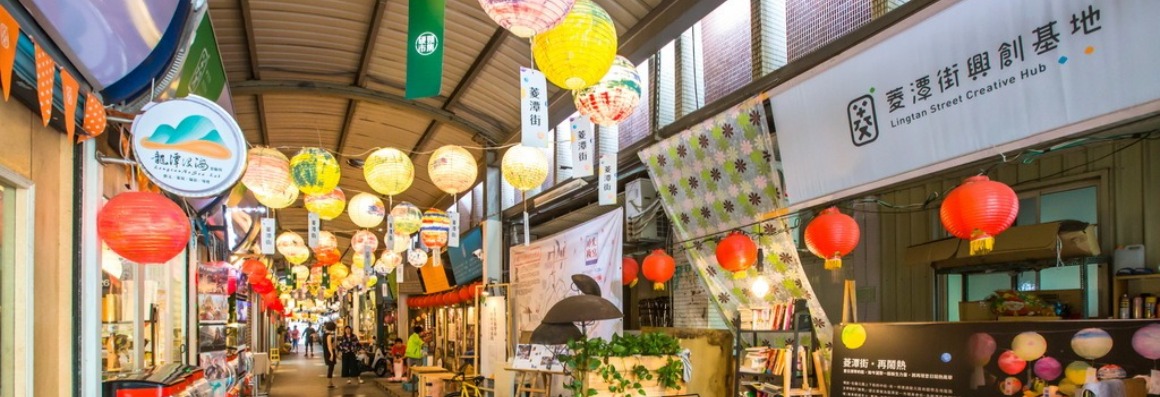 Longtan Sport ParkLongtan Sports Park is a public park located near the bustling city center of Longtan District, Taoyuan City. It is situated between Gongyuan Road, Jianxing Road, Dachang Road, and Beilong Road. Upon entering from Gongyuan Road, visitors can see the imposing Longteng Monument, inscribed with "Longteng Garden" on the front and the word "Perseverance" on the back. The park aims to promote a sports culture and foster a spirit of health and vitality among people, symbolized by the inscription on the monument. It advocates the integration of sports and arts, providing nourishment for a healthy body and mind. Adjacent to the monument, there is a pavilion for visitors to rest on the nearby lawn.
Longtan Sport ParkLongtan Sports Park is a public park located near the bustling city center of Longtan District, Taoyuan City. It is situated between Gongyuan Road, Jianxing Road, Dachang Road, and Beilong Road. Upon entering from Gongyuan Road, visitors can see the imposing Longteng Monument, inscribed with "Longteng Garden" on the front and the word "Perseverance" on the back. The park aims to promote a sports culture and foster a spirit of health and vitality among people, symbolized by the inscription on the monument. It advocates the integration of sports and arts, providing nourishment for a healthy body and mind. Adjacent to the monument, there is a pavilion for visitors to rest on the nearby lawn.